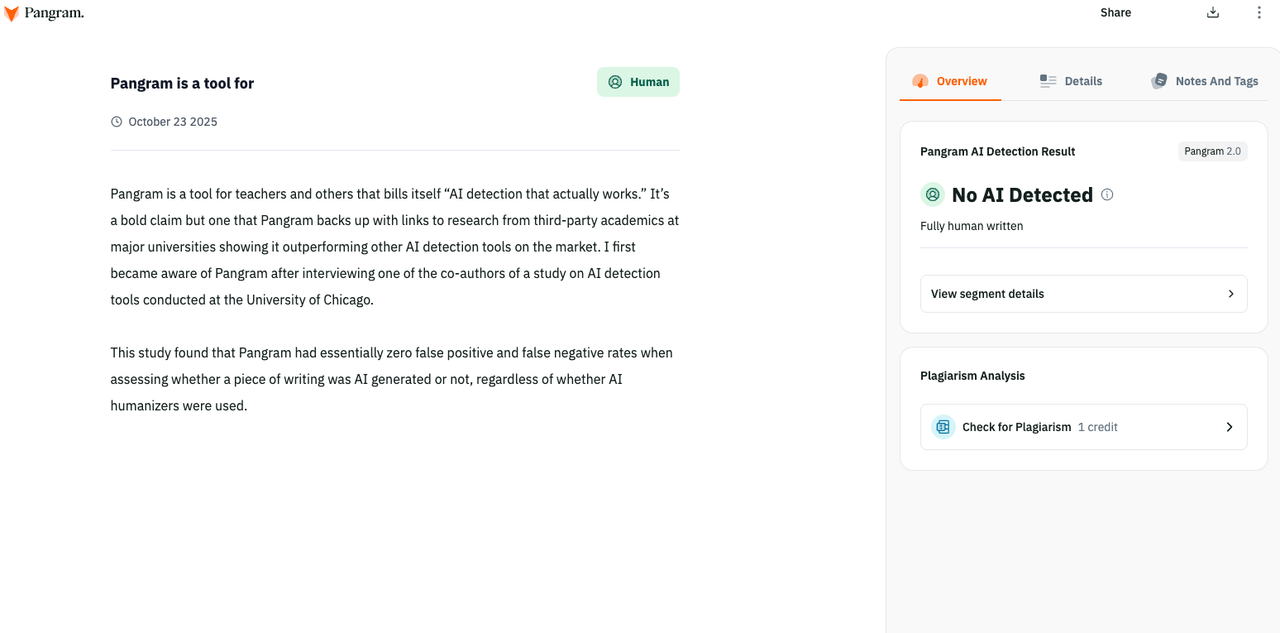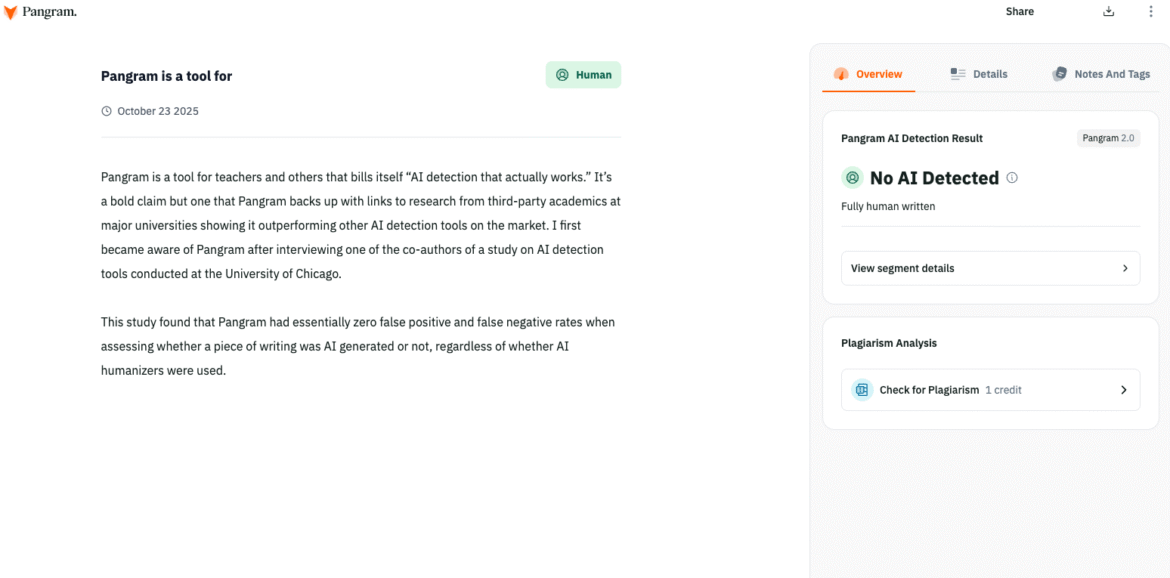
Pangram is a tool for teachers and others that bills itself as “AI detection that actually works.” It’s a bold claim but one that Pangram backs up with links to research from third-party academics at major universities showing it outperforming other AI detection tools on the market.
I first became aware of Pangram after interviewing one of the co-authors of a study on AI detection tools conducted at the University of Chicago. This study found that Pangram had essentially zero false-positive and false-negative rates when assessing whether a piece of writing was AI-generated or not, regardless of whether AI humanizers were used.
For this story, I conducted by own more informal tests of Pangram and was impressed overall. It’s certainly better than other AI detection tools I’ve used, and has great additional features that let you know some of the reasons a piece of writing was flagged as AI-generated or not. However, it wasn’t 100% perfect.
Here’s a closer look.
What is Pangram?
Pangram is an AI detection tool designed to accurately detect AI use while also providing educators and others some of the rationale for why a piece of writing was flagged as AI-generated.
To that end, Pangram flags phrases or terms that are more likely to be used by AI, even giving you a sense of how much more likely. One piece of AI writing I submitted came back with multiple phrases more than 20x likely to have been generated by AI than a human.
Pangram also has browser extensions that let you scan the pages you are reading for potential AI-generated text. This could save teachers who are grading online work time, and also could potentially help them wade through the AI slop that is becoming increasingly common on the internet.
How Did Pangram Fare in My Tests?
I was impressed with the research demonstrating Pangram’s efficacy at correclty identifying AI writing vs. human writing, but I still wanted to see how it did in my educational and writing settings.
After putting it through many tests, both of writing I had generated and work I had prompted with ChatGPT, I was impressed. Pangram was correctly identifying whatever I threw at it.
In fact, I was so impressed that I decided to make things more difficult for Pangram by mixing and matching two paragraphs of my writing with a third AI-generated paragraph that I had asked ChatGPT to create after reading my first two paragraphs. In my view, this made ChatGPT’s writing much more difficult to spot, but Pangram correctly flagged the piece of writing overall as AI-generated.
On the one hand, this was great: it wasn’t fooled by my inclusion of some human writing overall. But on a less positive note, it now insisted that the two paragraphs I had written were also AI-generated, pointing out two phrases I used that were more likely to be used by AI. This failing was understandable but a little disappointing, particularly because it had previously correctly labeled these same two paragraphs as human-generated.
In other words, even though Pangram is great at recognizing when AI writing has taken place, it’s still not perfect at piecing out exactly what is AI vs. human-written. Ideally, as educators, we’d have the opportunity to tell exactly which elements of text were human-generated vs. AI-generated, though I get that might be asking too much.
How Much Does Pangram Cost?
Anyone who creates a Pangram account gets five free credits per day. Generally, one credit gets you one AI test, though longer passages might require more credits.
Subscription plans start at $15 per month for 600 credits per month. A more robust $45-per-month plan gets users access to 3,000 credits per month.
What Are Pangram’s Best Features?
Pangram’s best features include its ability to accurately ID AI text and provide reasons for that accuracy. This can allow educators to use their own judgment on a case-by-case basis to inform their conversations with students around AI use. Instead of saying, “You were flagged for AI use on this paper . . . .” teachers might start a conversation with a student along the lines of, “This piece had several phrases that are commonly used by AI tools. What can you tell me about that?”
These types of conversations may become more necessary as AI use continues, and a tool such as Pangram can help educators as they navigate appropriate and inappropriate AI use with students.
Enjoy our content? Make sure to add Tech & Learning as a preferred source on Google to keep up with our latest news, how-tos, profiles, events, and more.


